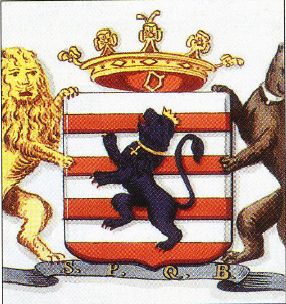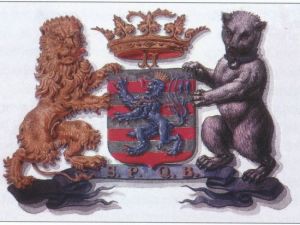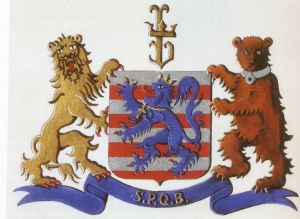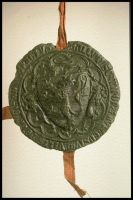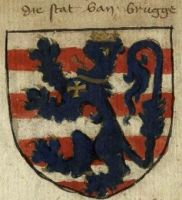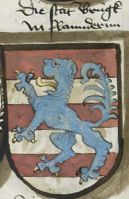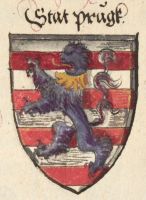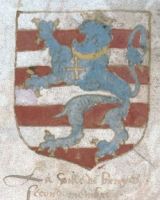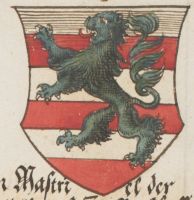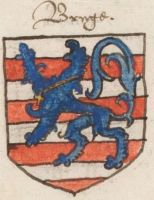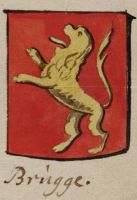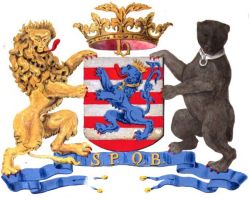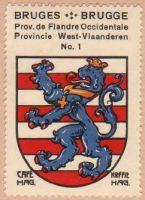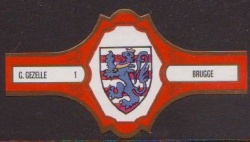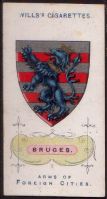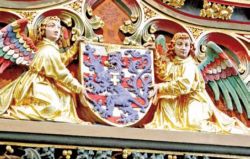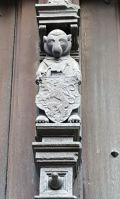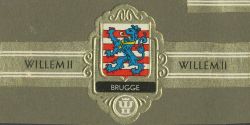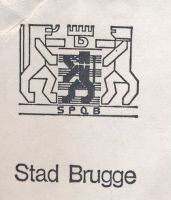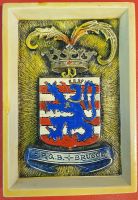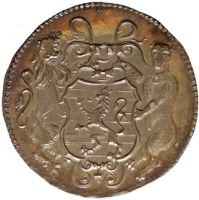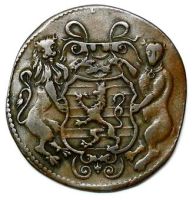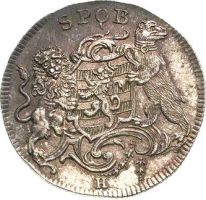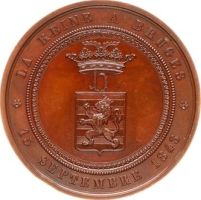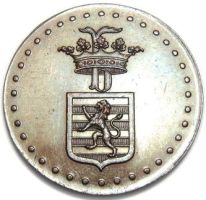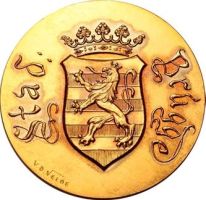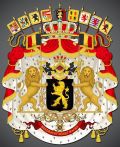| The arms from 1819The arms from 1842The arms from 1987
|
BRUGGE
Country : Belgium
Province :
West-Vlaanderen
Additions:
Loading map... {"minzoom":false,"maxzoom":false,"mappingservice":"leaflet","width":"250px","height":"250px","centre":false,"title":"","label":"","icon":"","lines":[],"polygons":[],"circles":[],"rectangles":[],"copycoords":false,"static":false,"zoom":7,"defzoom":14,"layers":["OpenStreetMap"],"image layers":[],"overlays":[],"resizable":false,"fullscreen":false,"scrollwheelzoom":true,"cluster":false,"clustermaxzoom":20,"clusterzoomonclick":true,"clustermaxradius":80,"clusterspiderfy":true,"geojson":"","clicktarget":"","imageLayers":[],"locations":[{"text":"","title":"","link":"","lat":51.2075999999999993406163412146270275115966796875,"lon":3.223599999999999798916405779891647398471832275390625,"icon":""}],"imageoverlays":null} |
Official blazon
| Dutch
|
- (1819) Gedwarsbalkt van zilver en rood van acht stukken waarop een klimmende leeuw van lazuur getongd en genageld van rood, gekroond van goud en hebbende om deszelfs hals eene band waaraan een kruis mede van goud, het schild gedekt met een gouden kroon in het midden der kroon is geplaatst de letter b mede van goud. Het wapen ter regter zijde vastgehouden door een klimmenden gouden leeuw getongd en genageld van rood en ter linker door een klimmenden beer in deszelfs natuurlijke kleur gehalsband van zilver onder het wapen het devies de letters S.P.Q.B.
- (1842) Zilveren en roode banden, van 8 stukken, met eenen blauwen opspringenden leeuw, geklauwd en getongd met rood, met eene gulden kroon, draegende aen den hals een hangend kruys ook van goud. Den schild gedekt met eene kroon, te midden waervan de letter B, het een en ander van goud; berustende ter regter zyde op eenen gulden leeuw geklauwd en getongd met rood, en ter linker zyde op eenen beer naer het leven, met eenen zilveren halsband. Alles rustende op een blauw snoer voerende de letters S.P.Q.B van goud.
- (1987) Gedwarsbalkt van acht stukken van zilver en van keel met over alles heen een leeuw van lazuur, geklauwd en getongd van keel, gekroond en gehalsband van goud, de halsband voorzien van een kruisje van hetzelfde. Het schild overtopt met een gotische letter b, de schacht voorzien van een kroontje met drie fleurons, alles van goud, en gehouden rechts door een aanziende leeuw van goud, geklauwd en getongd van keel, en links door een aanziende beer van natuurlijke kleur, gehalsband van zilver. Het geheel rustend op een lint van lazuur, beladen met de letters S.P.Q.B. van goud.
|
| English
|
blazon wanted
|
Origin/meaning
The above arms were granted on July 1, 1986. previously the arms were granted on October 20, 1819 and these arms were confirmed on February 26, 1842.
The arms were first officially granted by the Count of Vlaanderen in 1304. The lion is most likely derived from the lion of the Counts of Vlaanderen, but shown in a different colour (blue instead of black). The colours are known since the 14th century.
The oldest known seal of Brugge dates from 1199. It shows a fortress and some fleur-de-lis. The second seal shows a similar composition. The arms first appear on the third seal, known since the late 13th century. The seal shows still a fortress or city gate, but in the base of the seal is a small shield with the bars and lion. In the seal from 1289 the number of bars was increased form 6 to 8. The meaning of the bars, however is not known.
The crest shows a Gothic letter B with a crown. This logo was first used by the city in the 14th century and was later placed in the crest.
The lion supporter is derived from Vlaanderen, the bear is derived from the symbol used by a chivalrous jousting society, which was very popular among the public. The bear was a very popular symbol, but was not part of the arms until the 16th century. All seals between the late 14th and 19th century show two lions as supporters.
In the 17th century the motto SPQB, or Senatus PopulusQue Brugensis (council and people of Brugge) was added. The motto was derived from the motto of classical Rome, and indicated the city's administrative and judicial autonomy.
Image gallery
The seal of Brugge from 1311 (courtesy of Stadsarchief Brugge)
The arms in the Armorial Gorrevod (1460)
The arms in the Armorial Jörg Rügen (1495)
The arms in the late 15th century
The arms in a manuscript from 1558
The arms in a manuscript from 1576
The arms in the 16th century
The arms in a book from 1656
The arms in Traversier (1842)
The arms on a German collectors card +/- 1914
The arms on a British tobacco card +/-1910
Use of the arms on the city hall of Brugge
Use of the arms on the city hall of Brugge
Use of the arms in the Belfort of Brugge
The arms on a police badge (source)
The arms on a municipal cover (1960s)
Arms on a municipal cover 1974
Het wapen op een tegel (+/- 1965)
The arms on a token from 1666
The arms on a token from the 1650s
The arms on a token from the late 17th century
The arms on a token from the 1750s
The arms on a token from 1843
The arms on a token from 1878
The arms on a token from 1884
The arms on a token from 1887
The arms on a token from 1955
Literature: Servais, 1955; Information leaflet issued by the Brugge council, 1987; Viaene-Wouters and Warlop, 2002. Older images used with permission of Dexia Bank. Image of seal obtained from the Stadsarchief Brugge (city archives).
Belgium heraldry portal
Contact and Support
Partners:
Your logo here ?
Contact us
© since 1995, Heraldry of the World, Ralf Hartemink 
Index of the site

